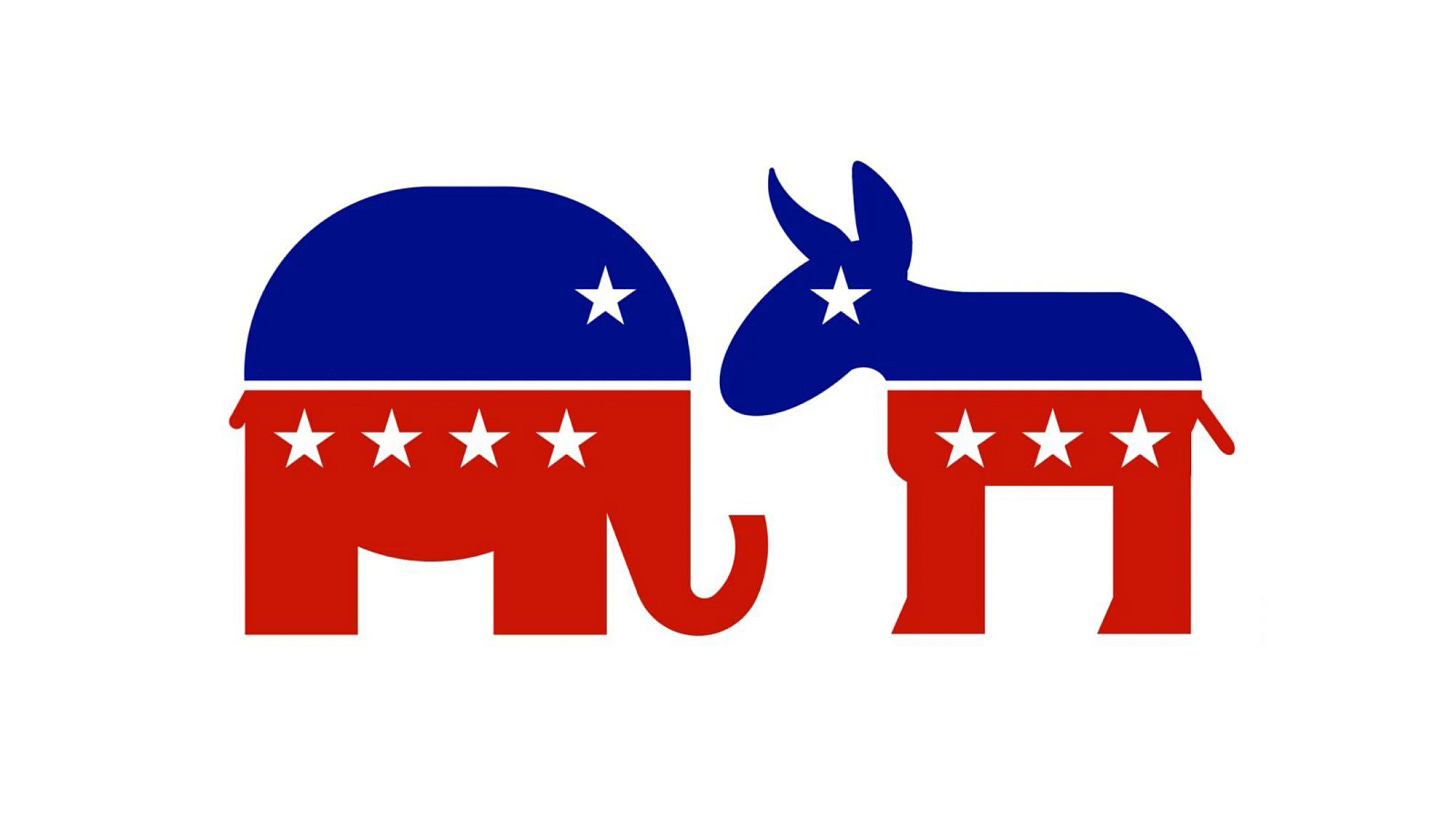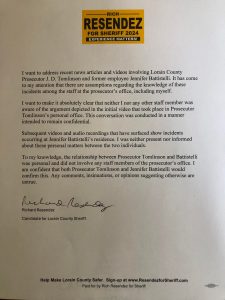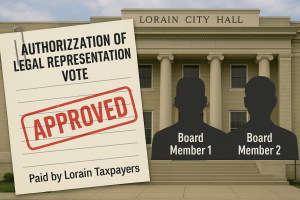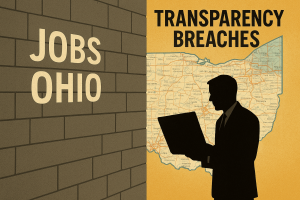Disenfranchised by Design: How Lorain County’s Ballot Policy Silences Republicans and Skews Democracy

A System Designed to Confuse: How Ohio’s Affiliation Rules Erase Voter Identity and Undermine Both Parties
May 05, 2025
By Aaron C. Knapp
May 5, 2025

Thanks for reading Aaron’s Substack! Subscribe for free to receive new posts and support my work.
“You can take an Issues Only ballot — or nothing.”
— What I was told by Lorain County election officials on April 18, 2025.
What happened to me at the Lorain County Board of Elections last month wasn’t just an administrative oversight — it was a warning shot. When a certified Republican candidate is denied a Republican primary ballot and offered only a “Democratic” or “Issues Only” option, we are no longer in the realm of neutral election administration. We’re in the domain of silent disenfranchisement, voter manipulation, and forced political reclassification. And it’s happening right here, in Lorain County, Ohio.
Under current Ohio election law, party affiliation is determined not by your registration, your values, or even your candidacy — but solely by the last partisan primary ballot you cast. If you vote on a Democratic ballot this cycle, you are instantly classified as a Democrat. If you vote only on “issues,” you are stripped of party affiliation altogether. There is no mechanism to affirm your Republican identity unless you are issued — and vote — a Republican primary ballot. This outdated, illogical structure is enshrined in Ohio Revised Code § 3513.19 and has been weaponized in local election offices across the state.
On April 18, 2025, I went to the Board of Elections office as a certified Republican candidate for Lorain City Council – Ward 6, seeking to vote early in the Republican primary. I was denied. The explanation? “There’s no Republican ballot in your precinct.” Instead, I was told I could take a Democratic or Issues-Only ballot. I refused. But what about everyone else — every unaffiliated, Independent, or low-information voter who just wanted to vote on Issue 2 and was offered only one choice? How many of them unwittingly lost their partisan identity with a single click?
Here’s why it matters. Ohio’s system means that when voters cast an “Issues Only” ballot, they are automatically unaffiliated — erasing their party identity in the state voter file. This shift isn’t just symbolic. It artificially depresses the number of registered Republicans (or Democrats) in a given district, affecting how campaigns target voters, how parties allocate resources, and how state officials interpret political demographics. Over time, these shifts influence policy priorities, candidate recruitment, and redistricting decisions. The data becomes not just flawed — but dangerous.
Consider the impact on primary elections. If voters who lean Republican are pushed out of Republican primaries — or misclassified as unaffiliated — the party loses influence over its own nominees. Worse, in a majority-Democratic district like parts of Lorain, the only competitive races may be on the Democratic side. Republican voters then face a coercive choice: vote Democrat or forfeit influence entirely. In effect, Republican citizens are functionally compelled to participate in Democratic primaries just to be part of the process. That isn’t democracy. It’s duress.
This distortion of partisan affiliation also paves the way for modern-day gerrymandering by attrition. By gradually eroding the official Republican registration base, election boards and state officials can justify redrawing district lines to reflect a skewed, Democratic-leaning composition — even when that composition is the product of voter misclassification. Over time, “Issues Only” ballots become a quiet scalpel that redraws districts from the inside out. And unlike traditional gerrymandering, this version leaves no visible map lines — just voter files rigged by administrative policy.
The legal violations here are no less alarming. Under Ohio Revised Code § 149.43, any citizen has the right to request and receive public records — including explanations for administrative decisions by public offices. When I verbally requested a written explanation for my ballot denial from Deputy Director Jim Kramer, I was refused. I repeated that request three times. I followed it with a written complaint. As of today — ten business days later — I have still received nothing. This is not only a breach of transparency; it is a violation of state law.
That’s why Senate Bill 147, the Voter Registration Modernization Act, is so urgently needed. SB 147 would allow voters to affirm or change party affiliation directly through the registration process, just like 31 other states and the District of Columbia. It would restore clarity, empower voters to declare their political identity without gaming the primary process, and ensure that voter rolls reflect reality — not administrative trickery.
This isn’t just about Republican voters — it’s about any voter whose affiliation should be honored, not erased, by the system. Whether you’re a Green Party member in Oberlin, an Independent in Avon, or a Democrat in Elyria tired of playing political musical chairs, you deserve clarity, fairness, and the right to vote your values without penalty or confusion. Denying that right isn’t just voter suppression — it’s data suppression, policy suppression, and democracy suppression.
I have filed a follow-up complaint. I have demanded answers. I will not be silent — because this story isn’t just mine. It belongs to every voter in Ohio who has ever been told their political identity is optional, conditional, or revocable. It’s time we demand a system that reflects reality — and respects us.

A System Designed to Confuse: How Ohio’s Affiliation Rules Erase Voter Identity and Undermine Both Parties
To understand just how damaging Ohio’s current system is, we must look at how party affiliation is defined in our state. Unlike most others, Ohio does not let voters choose a political party when registering. There’s no checkbox. No preference field. No opt-in system. Your party affiliation is not based on your beliefs or registration — it’s defined only by which party’s primary ballot you last pulled.
This makes Ohio one of the few states in the nation where affiliation is based not on intent, but on a tactical accident. You might be a lifelong Republican, but if you vote in a Democratic primary to help a moderate defeat an extremist, you’re now a “Democrat” in the voter file. And if you vote an “Issues Only” ballot? You’re stripped of affiliation altogether. No party. No visibility. You become invisible to party organizers and political coalitions alike.
This silent reclassification doesn’t just confuse voters — it corrupts the data. Voter rolls become riddled with false affiliations. Party leaders planning outreach, resource allocation, or ballot strategy are basing decisions on skewed figures. For example, a Republican precinct might appear to be shrinking, when in fact its voters were merely mislabeled or erased after taking “Issues Only” ballots. Meanwhile, Democrats who’ve done the same might lose visibility to their own party’s GOTV efforts.
The effect is particularly insidious during off-year elections, like 2025, when there are fewer partisan contests. In many counties — including Lorain — voters are offered ballots with only issues or candidates from one party. If a voter doesn’t want to declare for that party, they’re forced to take an “Issues Only” ballot, which wipes their previous affiliation clean. This happened to me. And it’s happened to countless others. It’s bureaucratic disenfranchisement masquerading as neutrality.
For Republican organizers, this represents a crisis of visibility. When their voter rolls show tens of thousands fewer affiliated voters than actually exist, it’s harder to build local committees, win endorsements, or receive fair treatment in media or polling. For Democrats, the problem is just as severe — especially in swing counties where data precision is crucial for turnout models, resource deployment, and candidate recruitment. Both parties lose.
Even more alarmingly, the state legislature and redistricting commissions rely on these voter files to make assumptions about political geography. When affiliation data is off — or deflated by systematic ballot erasure — it can lead to distorted maps that favor incumbents, suppress competition, or manufacture justification for gerrymandering. In other words, Ohio’s broken affiliation process doesn’t just affect how people vote — it affects where and whether their votes count.
That’s why Senate Bill 147, the Voter Registration Modernization Act, is a long-overdue solution. Sponsored by Senator Michele Reynolds, SB 147 would allow voters to affirm or change party affiliation directly through the registration process, just like 31 other states and the District of Columbia. It would restore clarity, empower voters to declare their political identity without gaming the primary process, and ensure that voter rolls reflect reality — not administrative trickery.
Modernization doesn’t favor one party over the other. It favors voters. SB 147 would protect first-time voters from confusion, end the punitive nature of “Issues Only” ballots, and finally bring Ohio in line with national norms. It would stop the silent attrition of political identity and ensure that voter intent — not procedural technicalities — guides our democratic process.
The longer we allow this outdated system to stand, the more distorted our data, our politics, and our public trust will become. It’s time to fix it. It’s time to pass SB 147.
Final Thought: Fix the System Before It Fixes the Outcome
Let me be absolutely clear: what happened to me at the Lorain County Board of Elections was not a clerical error — it was the predictable result of a broken system that punishes voters for trying to participate in democracy. When a certified Republican candidate is denied a Republican ballot, when party affiliation is determined not by choice but by trickery, and when voter identity can be erased by a single uninformed click, we are no longer operating in a democracy that respects consent. We are in a system that manufactures confusion and then hides behind it.
This is not a partisan issue. It is a constitutional one. If our votes are the expression of our political identity, then the State of Ohio has no business reclassifying, deleting, or mislabeling that identity without our consent. I will not stand by while this system continues to disenfranchise Republicans, distort data, mislead both major parties, and erode the foundation of fair representation. Neither should you.
Senate Bill 147 isn’t just a reform bill — it’s a lifeline. It gives power back to voters where it belongs: in the hands of the people, not the spreadsheets of bureaucrats. And I will continue fighting for its passage, not just because I was personally targeted, but because no voter — Republican, Democrat, or Independent — should ever be told who they are by a form they didn’t fill out.
We deserve better than ballot games and silence. We deserve the right to choose our party, our candidates, and our future — without being erased by design.








